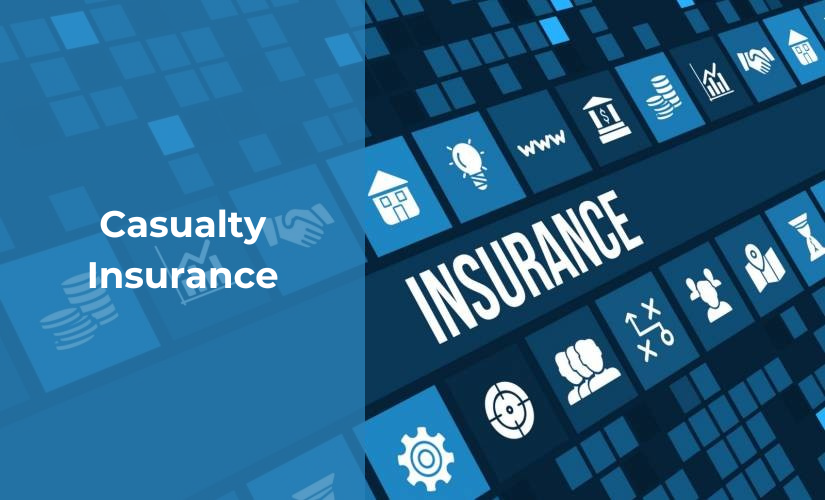Understanding the types of insurance available can be complex, but property and casualty (P&C) insurance is essential for anyone seeking financial protection for physical assets and liability risks. These policies cover a range of potential risks associated with property—like homes, cars, and businesses—as well as liabilities that may arise from these assets.
For individuals, it offers reassurance against unexpected losses, while for businesses, it forms a critical part of a risk management strategy. Whether covering assets or liability, P&C insurance provides a safety net for various unpredictable situations. In this article, we’ll dive into what does property and casualty insurance covers and why it plays a vital role in personal and business financial protection.
What Does Property and Casualty Insurance Cover?
Property and casualty insurance covers both physical assets and liability risks, offering financial protection for owned property and potential damages caused to others. To better understand what does property and casualty insurance covers, it’s helpful to consider both types of coverage individually.
Property insurance is designed to protect physical assets like homes, vehicles, and business properties, while casualty insurance addresses liability risks that may arise from injuries or damages caused to third parties. Together, they form a crucial part of an individual’s or business’s risk management strategy, covering everything from damage to owned assets to liability costs if a third party experiences harm or property loss connected to your activities.
What Is Covered Under Property Insurance?
Property insurance, a key component of what does property and casualty insurance covers, focuses on protecting physical assets. It typically includes coverage for buildings, equipment, and inventory. For personal policies, this means coverage for damages to your home and personal belongings due to common perils like fire, theft, or vandalism.
Business policies extend this to cover commercial properties and business assets, such as office equipment and stored inventory. It’s essential to understand that property insurance may offer reimbursement on either a replacement cost basis or an actual cash value basis. Replacement cost coverage allows you to restore or replace damaged assets at today’s market price, while actual cash value coverage considers depreciation, potentially impacting the reimbursement you receive.

What Is Covered Under Casualty Insurance?
Casualty insurance represents another vital piece of what does property and casualty insurance covers, as it focuses on protecting against liability claims that could arise from injuries or damages involving others. Liability protection is critical, covering bodily injury and property damage claims resulting from accidents, negligence, or unexpected events.
Casualty insurance typically also includes legal fees and settlements if you are sued due to an incident connected to your property or business operations. This insurance provides invaluable financial protection against potentially high costs for legal representation, court fees, and settlements or judgments if deemed necessary.
Specialized Property Coverages
Moreover on what does property and casualty insurance covers, certain specialized property policies address specific risks that may not be included in standard coverage. These add-on coverages, or endorsements, offer protection for unique or high-risk assets and scenarios.
For example, natural disaster coverage for earthquakes, floods, or hurricanes may be excluded from standard policies, though it can be added to address the significant risk associated with these events, especially in high-risk areas. Inland marine insurance, another specialized option, covers high-value or mobile assets, particularly while they are in transit. Equipment breakdown insurance is yet another form offering protection for the repair or replacement of critical equipment, which can be essential for many businesses reliant on machinery and technology.
Types of Casualty Coverages
To fully understand what does property and casualty insurance covers, it’s useful to mention different types of casualty insurance. General liability insurance, for example, is a common coverage for businesses, providing protection against liability claims that may arise from operations, including bodily injuries or property damage claims.
Another critical type is auto liability insurance, which covers liability for personal and commercial vehicle accidents where the insured is responsible for injuries or property damage. For those needing extended liability protection, umbrella insurance offers additional coverage that takes effect once primary policy limits are exhausted. It’s an ideal choice for those with significant assets to protect, as it provides a financial buffer against larger claims.
Property and Casualty Insurance in Business
For business owners, understanding what does property and casualty insurance covers is crucial for long-term stability and growth. Property insurance in a business environment protects essential assets, such as buildings, equipment, and inventory, which could face risks like fire, theft, or natural disasters that disrupt daily operations. Casualty insurance, on the other hand, provides liability coverage that shields businesses from a range of potential legal issues tied to business operations, such as accidents or injuries on the premises.
Different industries often face unique risks, which means business owners may need to seek specialized coverage that matches their specific needs. For instance, construction companies might need endorsements for tools and equipment or builder’s risk insurance, while retail businesses may require product liability coverage to protect against customer claims related to their products. By tailoring property and casualty insurance to their operational needs, business owners can secure their assets and reduce vulnerability to unpredictable events.
Exclusions in Property and Casualty Insurance
Even with a comprehensive understanding of what does property and casualty insurance covers, it’s essential to recognize common exclusions. Most property insurance policies do not cover regular wear and tear, for instance, nor is damage that is intentionally caused. Additionally, certain high-risk situations, such as acts of war or nuclear incidents, are often excluded due to the unpredictable and extensive nature of potential damages.
Furthermore, policies may have specific exclusions based on location, asset type, or other risk factors, which is why it’s critical to review policy details carefully. Many insurers allow policyholders to add optional coverages, like flood or earthquake insurance, to address gaps in standard policy protections. To best understand the exclusions in your P&C policy, it’s best to discuss it with an agent and read it carefully prior to agreeing to anything.
Factors Affecting Property and Casualty Insurance Premiums
When trying to understand what does property and casualty insurance covers, knowing what influences policy premiums is also key. The premiums you pay are often affected by factors such as location, type of property or business, and claims history. For instance, homes or businesses in areas prone to natural disasters may carry higher premiums, while businesses with a high claims history may also see an increase in rates.
Deductible levels also affect premiums, as selecting a higher deductible generally results in lower premiums but requires the policyholder to cover more out-of-pocket costs in the event of a claim. Many insurers offer premium discounts for the presence of safety features, like security alarms and sprinkler systems, which mitigate risk and encourage policyholders to implement safety practices.

Conclusion
In summary, understanding what does property and casualty insurance covers is essential for personal and business financial security. Property insurance safeguards assets from physical damage, while casualty insurance provides liability protection against potential legal and financial risks. Tailoring coverage to meet individual or business needs is an effective way to ensure that insurance provides the necessary protection against a wide range of risks.
Reviewing policy details regularly and staying informed about options can help maintain the right balance of coverage over time. For agencies with a higher workload, utilizing P&C insurance outsourcing solutions can help aid administrative pressures, allowing them to manage their workload more efficiently and focus on growth and client service.
